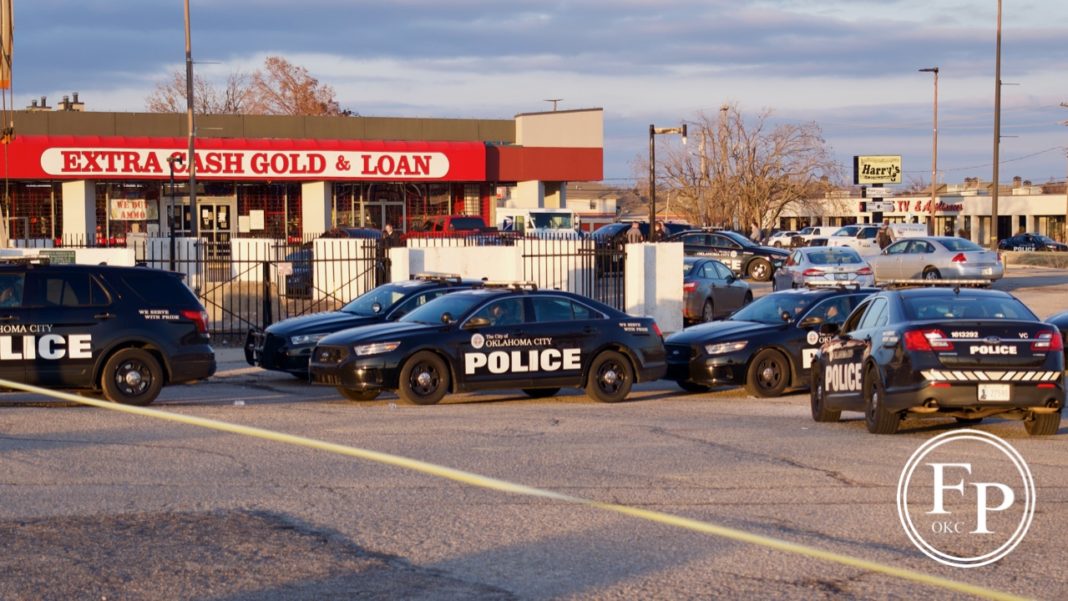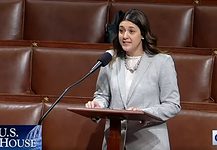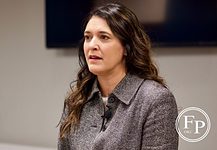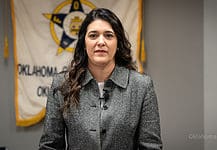Last Updated on December 15, 2020, 9:49 PM | Published: December 15, 2020
When a video of Bennie Edwards being shot by Oklahoma City Police Department officers hit social media on Friday, people who live or work in Oklahoma City’s central districts knew who he was immediately. They recalled buying flowers from Edwards near the Clara Luper Post Office Building and found themselves fondly remembering his smiles and kind words.
And then they got justifiably angry, because yet another Black man had been shot and killed by police.
Edwards, who was 60 years old, lived with bipolar schizophrenia. While family members said he had a place to stay with an aunt, his mental illness drove him outside, where he spent most of his time.
Police had responded to a report of a Black man bothering customers, according to a departmental statement after the incident. Later, officers said Edwards had a knife.
Opinion by George D. Lang
If it weren’t for phone cameras and social media, Edwards’ killing by Master Sgt. Keith Duroy and Sgt. Clifford Holman of OKCPD might have gone largely unreported.
Instead, we learned from the ever-vigilant Black Times that a group of protesters assembled quickly at the El Patron Super Market, 2121 N. Hefner, and several of them, including my friend Jabee Williams, got pepper sprayed for exercising their rights to free speech.
That evening, as Free Press reported, anger and sorrow spilled out from one speaker after another at a peaceful protest in front of OKCPD Headquarters.
“He was in the streets because he loved it,” said Edwards’ niece Ameerah Gaines through tears and crying. “He liked to meet new people. He loves people. He likes selling his flowers.”
If you are mentally ill, poorly clothed and a person of color, that can be a capital offense, especially if the responding officers do not receive the entirely voluntary Crisis Intervention Training (CIT).
Only 14 percent of OKCPD officers have taken the voluntary training and Duroy and Holman are part of the 86 percent who have not according to an email response by OKCPD Captain Dan Stewart to an Oklahoma Watch request.
Because OKCPD makes CIT a voluntary part of training, it appears to be the responsibility of everyone experiencing mental illness in Oklahoma City to keep their unquiet minds in check or possibly be shot.
According to a joint report by StateImpact Oklahoma and Oklahoma Watch in October, the number of mental health calls to which OKCPD responded climbed 95 percent between 2013 and 2019. Why is this not a priority?
The lack of training in response to a growing crisis is unconscionable and possibly criminal.
One year ago, city residents voted for increased mental health care and intervention as part of the Metropolitan Area Projects 4 (MAPS 4), and OKCPD is not keeping up with the needs and the will of the people they serve, and they certainly failed Edwards.
It was not worth the death of a single person for us to have yet another learning experience, but since Oklahoma City did not learn quickly enough to save Bennie Edwards, here we are again.
First, CIT should be mandatory, full-stop. This should not merely be career advancement or post-incident training for officers who fail to take it like Duroy and Holman. It should take place before rookies go on their first patrols. If they cannot pass this important training, they do not receive badges.
And if OKCPD does not go forward with this desperately needed reform in its training practices? Well, we could always defund them. This is what that whole debate is about — making necessary, life-and-death improvements to police work.
Duroy has 28 years on the force and Holman has seven, and the training lasts 40 hours. That’s one week of training that might have saved Edwards’ life.
Second, reporters need to discern what is valid information from police sources and what is opposition research designed to provide retroactive justification for police actions.
When The Oklahoman tweeted a story link on Monday that Edwards was arrested six years ago for attacking a postal worker with a knife, social media protest was loud and righteous over what appeared to be a carefully placed “Well, but…” article in the ongoing conversation over police shootings.
The latest in-house version of the story has been edited to emphasize the lack of training among OKCPS cops, but an Associated Press version on the site emphasizes Edwards’ past record in the lede. The AP version is the one that will be used by every racist uncle in his spittle-flecked “Blue Lives Matter” rant during an unmasked Christmas dinner this year.
In 1963, When Edwards was a three-year-old boy, President John F. Kennedy signed the Community Mental Health Act, which would have established a network of community mental health centers. Unfortunately, the plan was never fully funded following Kennedy’s assassination.
While President Jimmy Carter tried to realize Kennedy’s dream with the Mental Health Systems Act in 1980, President Ronald Reagan rolled it back with the Omnibus Budget Reconciliation Act, one of his first acts of Thatcherian austerity, which pushed responsibility for the mentally ill back to the states.
So, the system failed Edwards and millions of other people living with mental illness. He was carrying a knife because he was mentally ill and spending most of his life on the streets, where he was invisible to all but the kindest of our citizens.
By contrast, in April 2019, Oklahoma Second Amendment activist Tim Harper was arrested in Edmond for carrying an AR-15 at Hafer Park as part of a “second amendment audit.” He then did the same thing at a Twin Peaks restaurant in north OKC seven months later. Less than two weeks ago, Harper’s case was dismissed.
OKCPD leadership must ask themselves if there is equal justice. Edwards never had a chance to have his case heard. He brought a knife to the neverending gunfight of life in Oklahoma while being Black.
George Lang has worked as an award-winning professional journalist in Oklahoma City for over 25 years and is the professional opinion columnist for Free Press. His work has been published in a number of local publications covering a wide range of subjects including politics, media, entertainment and others. George lives in Oklahoma City with his wife and son.











